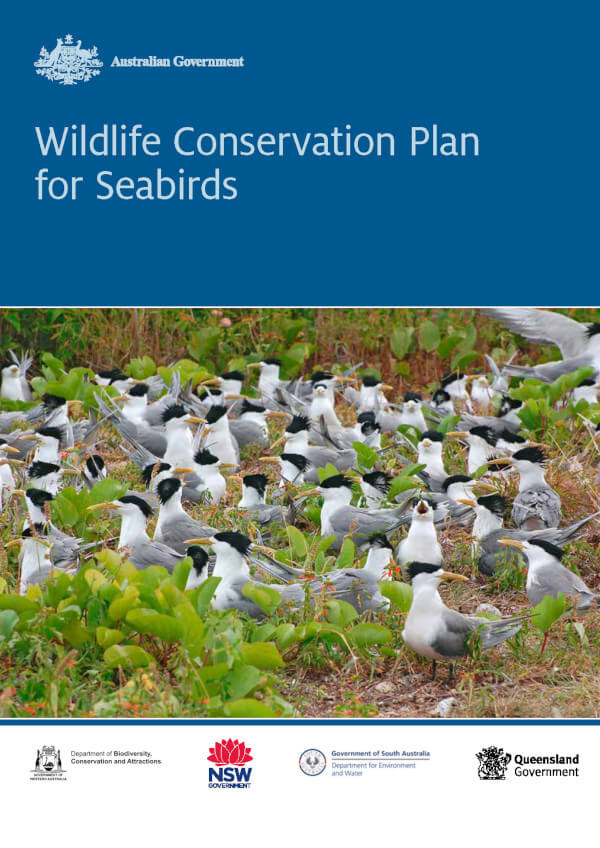
©️Australian Government
At the national level in Australia, the Environment Protection and Biodiversity Act 1999 (EPBC Act) provides for the development and implementation of wildlife conservation plans. The Australian Government Department of the Agriculture, Water and the Environment, in consultation with interested stakeholders, has developed a Wildlife Conservation Plan for Seabirds.
A wildlife conservation plan sets out the research and management actions necessary to support survival of one or more migratory, marine, conservation dependent or cetacean species listed under the EPBC Act, which are not considered endangered or vulnerable, but would benefit from a nationally coordinated approach to their conservation. This is the first Wildlife Conservation Plan for Seabirds developed under the EPBC Act.
There are over 100 species of seabird that occur naturally or regularly visit Australia during the course of their lifecycle. Australia’s coastal and oceanic habitats, particularly offshore islands and surrounding waters are critically important areas for seabirds during the breeding and non-breeding season as places to breed, rest and feed. For long-distance migratory species, these habitats also provide resources so birds can build enough energy reserves to travel the long distance to complete their annual migration.
Australia has statutory obligations to conserve EPBC Act listed seabird species within its jurisdiction and internationally through agreements such as the Convention on Migratory Species (CMS), the Agreement of the Conservation of Albatross and Petrels (ACAP) and the bilateral migratory bird agreements (JAMBA, CAMBA and ROKAMBA). This Plan recognizes that there are a range of government agencies, non-government organizations, research groups, industry, community groups and volunteers that are contributing to these activities in Australia and that the successful implementation of the Plan relies on the continued involvement of these organizations and people.
This Wildlife Conservation Plan for Seabirds outlines national activities to support seabird conservation initiatives and provides a strategic framework to ensure these activities plus future research and management actions are integrated and remain focused on the long-term survival of seabird populations and their habitats. The Plan outlines the statutory elements as legislated by the EPBC Act by addressing topics relevant to the conservation of seabirds, including a summary of Australia’s commitments under international conventions and agreements.
Download the materials: https://www.awe.gov.au/environment/biodiversity/publications/wildlife-conservation-plan-seabirds-2022




